|
We reached out to filmmakers from our International Elephant Film Festival and asked them five questions about the experience of creating their films. What inspired you to make this film? Praveen Singh: "As a wildlife filmmaker and person interested in wildlife conservation in India, I had read about Manas. For many years, Indian naturalists, writers and conservationists deemed this place to be one of India’s finest national parks, in terms of its beauty and unparalleled bio-diversity. I wished to visit this place but two decades of ethnic conflict had resulted in Manas becoming a virtual no go zone for even forest department officials, let alone tourists. When finally, in the mid 2000’s Manas began to return to normalcy and effective steps were taken to protect and conserve what remained of Manas, I visited Manas for the first time in 2011. Manas drew me in, inspired me. Seeing the ongoing conservation efforts of the forest department, wildlife conservationists and the Bodoland Territorial Council motivated us to tell the story of revival of this amazing UNESCO World Heritage Site." "Kosmik Global Media Pvt. Ltd, an Indian production company focused on wildlife documentary production, with whom I am a Director and Cinematographer, teamed up with Ammonite, UK to bring this story of Manas to viewers. With Ammonite's expertise in use of thermal, infrared and starlight camera technologies for unobtrusive night filming and our knowledge of the place, access to conservation organizations and ability to liaison with the forest department, we worked as a team in unison to tell a story. We hope to enthuse people in India and around the world to work together to safeguard this wild wonderland." Were there any particularly meaningful moments or experiences in the process? Praveen Singh: "Everyday spent in this beautiful forest was meaningful. From watching the hornbills, the flowering of Semul, conversations with forest guards or the drives in pitch darkness only aided by a thermal camera hoping to catch sight of a clouded leopard – were experiences that can’t be described in words. It was a privilege to be able to spend time in this wilderness. However, for me personally, one particular moment will remain etched in memory forever. Seeing a tiger here is a matter of sheer luck." "One day, in the afternoon while filming jungle fowl on the road, suddenly with no forewarning of alarm calls, a tiger just appeared out of nowhere and sat behind a tree watching us film. He sat there for a minute or so, quite curious and then just bolted and vanished into the thick jungle…It was one of the most memorable tiger sightings I have ever had in any Indian forest. It was magical, had all the elements of surprise and drama, inherently characteristics of the natural world." Describe some of the challenges? Praveen Singh: "Filming at night is always a challenge and more so when one is using unobtrusive, specially customized technology like we were - thermal, infrared and starlight cameras for capturing animal behavior. In Manas, thick jungles, tall grasses and low animal densities on account of decades of conflict, made our task very challenging and difficult. There were some jungle tracks – narrow, rocky paths bounded by thick forest, that we would avoid because of potential danger from elephants, as we were in low, open jeeps and in case of a sudden encounter with an elephant herd, it could spell trouble. This was a track where clouded leopards had been camera trapped, so perhaps we missed out on filming the elusive clouded leopard as a result, but safety is paramount." "We wanted to spend more time filming from the river, but didn’t have access to a silent motorboat. Low water levels in the river meant, we could only go upstream up to a point and that in a noisy country boat fitted with a noisy motor, scaring away animals before we got anywhere close to them. The only other option was to float down the river in a raft with a soft rubber bottom, again unsuitable for filming." What are you working on now? Praveen Singh: "There are a couple of projects in the pipeline. Essentially, we want to tell positive stories – stories that can inspire and motivate people to conserve our precious wilderness areas. We want to shine the spotlight on lesser known, but no less important wildlife areas in India." Anything else you would like people to know? Praveen Singh: "In India, as people aspire for better standards of living, given our population, we are faced with a tremendous challenge to protect and conserve our natural heritage. The only way we might be able to do this is if people get actively involved in conservation; if people realize that all the wealth in the world can not bring back the natural world once it’s lost and if people work consciously to reduce their consumption, which directly impacts the natural world in mostly negative ways." "As a wildlife filmmaker it is my endeavor to bring to viewers the awe, the wonder and the magic of the natural world through powerful, compelling and visually engaging storytelling." Praveen Singh is an India based wildlife filmmaker and cameraman. Since completing a Masters in ‘Mass Communication’ from New Delhi in 1998, Praveen has been working in wildlife/conservation related television programming. He was a faculty member at the Wildlife Institute of India: the country’s premier wildlife research and training centre. Apart from his wildlife documentaries he has twice won the Asian Pitch in Singapore for social documentaries. Praveen currently works for Kosmik Global Media Pvt. Ltd. Kosmik Global Media Pvt. Ltd. is a Mumbai, India, based Production Company specializing in wildlife documentaries. With Uday Sinh Wala as its CEO, Kosmik has embarked on an ambitious journey to become a leading content producer of wildlife documentaries from India.
4 Comments
By: Samuel Lewis
Earth Day is nearly upon us! On April 22nd we will be hosting an evening of food, drink and conversation to celebrate this planetary event at the Center for the Arts right here in Jackson Hole. On the theme of connecting to our planet and fighting for its future, we are screening two films absolutely free as well as plenty of good vibes and Earth friendly folk!
Each film is uniquely suited to the themes of Earth Day, and we're very excited to share them with you. The films explore the need for a connection between human life and the natural world. We are all part of a complex system of exchanges that create the circumstances necessary for life to exist. Both films host these ideas of connection in different ways, underpinning the ideals of Earth Day in the stories they weave. We couldn't wait, so we've previewed them and even prepared some tantalizing reviews to get you in the mood for earthy film goodness! Our Local Epic
Waterways are the arteries of the natural world. They deliver nutrients, connect disparate lands and cut swathes through the face of our planet. They transmit energy and create pathways for life to take hold in even the most unlikely of places. Each river has a journey and a story to tell, carved out over immeasurable time and through chaotic entropy. Constant, beautiful and wild, rivers are enchanting features of our world. They draw in our imaginations, our sense of adventure and our desire to feel connected to the power of nature. At times this is inspirational, at others, unpredictable and terrifying. Our relationship with the waterways of the land defines how we function as caretakers of our own environment. Our Local Epic is the incredible and multi-faceted story of the Clarks Fork of the Yellowstone River. This film ambitiously draws together the narratives of kayak enthusiasts, Native Americans and government into a stunning love letter to the Clarks Fork.
Within this harsh and thrashing channel, some have lost their lives, yet others have found something they believe is worth fighting for. Once believed untraversable, this river has become the benchmark which seasoned kayakers have come to measure themselves against. In an area of remarkable natural beauty, the Clarks Fork twists and churns down 150 miles of unspoiled Wyoming landscape. The river's story is told through the lives of those it has shaped. From the tale of Chief Joseph who led his tribe to escape hostile military across the treacherous gorge, to a young group of kayakers and their hazardous, yet life affirming experiences on the river. Told retrospectively in interviews through the filter of gained wisdom and age, their story reveals the captivating charm of the river and what makes them risk their lives to be a part of its course. When the river is threatened by the proposed building of a new dam, adventurers become activists. With the help of committed lifelong residents, they must hope that the undeniable character of landscape can convince developers of its intrinsic value. The rivers catalogue of unique human stories has inspired efforts to conserve waterways nationally. Our Local Epic continues that tale. The preservation of this tributary will pass on an invaluable gift to future generations that can only be described by one word: epic.
Wildways: Corridors of Life
For wildlife, isolation can be a death sentence. When barriers block free movement of animals, biodiversity falters and the number of species that can survive decreases dramatically. Our planets current state is one of decline. There are fewer and fewer species that can eke out an existence within the isolated pockets we have designated as protected areas. For life to flourish, diversity is essential. In creating national parks and areas of wildlife conservation, we have managed to save many important species. However, this is not a permanent solution. Animals, like humans, need the ability to move freely and breed with individuals outside their family groups in order to achieve a healthy population. This is the urgent message of Wildways: Corridors of Life. To solve the biodiversity problem we must stitch together the remaining pockets of wild areas to form a network of interconnected areas.
Wildways: Corridors of Life follows the fates of keystone species such as Grizzly bears, lions and elephants whose success or failure indicate the overall health of an ecosystem. The scientists, park rangers and conservationists who track and record these animal's movements are at the forefront of the story. Each individual they capture, collar and release recites a unique life journey revealing the avenues that make up the diverse tapestry of an ecosystem. Using the information they gather, they catalog the ways in which wildlife can be supported and how to create safe pathways between the areas in which they live. Genetic barriers such as roads, fences, and private farms can be overcome with modern methods of compromise between human infrastructure and wildlife migration. Drawing on the knowledge gained by generations of pioneering scientists, this film focuses on exploring the ways in which parks can be linked to create havens in our increasingly overcrowded world. Wildways: Corridors of Life is an insight into the developing world of connectivity conservation that offers hope to a planet increasingly divided both in nature and in humanity. Without these life giving passages of connection spread across the globe, our very existence is unsustainable.
We hope that you're as excited as we are after seeing these fantastic trailers and reading our reviews! Earth Day is all about unity and making an individual effort to contribute to a larger whole. Everyone has a different way to connect to conservation. If we are all willing to contribute in our own way, we can achieve harmony between humankind and the land we inhabit. Conservation is a demanding task, which requires our dedication and passion. Join us on Friday April 22nd for Earth Day at the Center for the Arts right here in Jackson Hole!
We reached out to the winning filmmakers from our Elephant International Film Festival and asked them five questions about the experience of creating their films. What inspired you to make this film? Kristin: "I sent Village Beat to visit the elephant nursery at the David Sheldrick Wildlife Trust with the goal of making a short film about the elephant poaching crisis. The two directors who make up Village Beat, Austin Peck and Anneliese Vandenberg, made the short film WILD as a result of their first visit to see the work of the DSWT. They came back to the US completely obsessed with doing more to help the orphaned elephants and to raise awareness of the brutality of poaching and toll it was taking on the elephant population. They asked me if I would finance and produce a full length feature, and that turned into Gardeners of Eden. I wanted to show people the amazing work the people on the ground in Kenya were doing to protect the baby elephants and stop the poachers." Were there any particularly meaningful moments or experiences in the process? Kristin: "There are so many amazing and meaningful moments when you are able to witness the work that goes into saving the orphaned baby elephants left behind after the poachers kill a herd or a mother elephant. Dame Daphne Sheldrick has committed her entire life to learning how to raise an orphaned baby elephant, and to reintroduce it into the wild. She is my inspiration in all of the work I do in conservation. And it was amazing to be given full access to the many different aspects of what the DSWT does- from the nursery where baby elephants fight for their lives with the loving care of the Keepers, to the Vet Unit calls to treat wild bulls injured by poachers, to the Anti-poaching units, who go out every day and risk their lives to save the elephants. I feel so blessed that my directors were able to capture what it is like to be fighting for elephants everyday on the ground in Kenya." Describe some of the challenges? Kristin: "The logistics of filming these events which happen all over Kenya was challenging. Austin and Anneliese slept in a tiny tent near the Keepers out in the bush in Tsavo National Park for days. I would not have a fraction of the beautiful footage that is in the two films if it weren’t for their toughness and ingenuity. They were able to capture the beauty and pain of the elephants by being in such intimate contact with them and gaining their trust." What are you working on now? Kristin: "I am continuing my work as official “Patron” to the David Sheldrick Wildlife Trust, using the two films to help to spread awareness and raise funds to continue expanding the work of the Trust. I am working on getting the film shown all over the world so everyone can witness what the Trust does and how incredible these creatures truly are. I am very proud that it is now on Netflix and iTunes in the US. Austin Peck has moved to Nairobi and is continuing to make original content for the Trust, recently he filmed the new babies that have been born in the wild to 3 of our ex-orphans." Anything else you would like people to know? Kristin: "I would like people to know that there IS hope for the elephants! Through the fostering program at DSWT (thedswt.org/fostering) everyone can “adopt” an orphaned elephant and become a part of their healing. Throughout the years I have worked with the Trust, it has been so gratifying to hear from people all over the world about “their” elephant baby. As an adoptive parent you receive detailed updates on your chosen elephant, and through those updates you learn so much about what is happening to elephants and what they are actually like. It is truly through this global, caring family of people that the David Sheldrick Trust has successfully raised over 200 orphaned elephants who are now living back in the wild. They have also treated 2,000 wild elephants who otherwise would have lost their lives to poachers. They also fund aerial teams who work with the ground teams of anti-poachers, and together they have successfully caught hundreds of poachers together with the Kenyan Wildlife Service."  Kristin Davis, left, is an activist, actress and producer known for her work in television and film. Kristin was the executive producer for 'Gardeners of Eden'. Guest article from Jackson Hole Eco-Tour Adventures Spring in Jackson Hole means many things. The return of the vibrant mountain bluebird from its winter refuge in the southern U.S. and Central America. The last days of spring skiing at Jackson Hole Mountain Resort. But none of this can match the first sighting of our largest carnivore, Ursus arctos horribilis, the Grizzly. Grizzlies are awake in Yellowstone National Park and recently the Jackson Hole News and Guide reported on the first one sighted in Grand Teton National Park. Bears are easily the most commonly requested animal to view on our tours and once they emerge from winter hibernation we excitedly search for them on our National Park Wildlife Tours. Historically widespread across the United States with numbers estimated at 50,000, conflict with homesteaders and early explorers eliminated bears from 98% of their historical range. Today, grizzlies have successfully reestablished populations throughout the Greater Yellowstone Ecosystem, but population densities are low with bears requiring a home range of between 148 (female) and 320 (male) square miles. With bears this much on the move, observing one in the wild is truly a special treat. Adapt, Hibernate, or Migrate?Animals in the Greater Yellowstone Ecosystem use these three strategies to survive our long winter months. While animals like elk move into the valley floors to subsist on leftover grasses and potentially feed on the National Elk Refuge, bears build up a massive reserve of fat in the fall before heading into dens in early winter. Once there they will not eat, drink, defecate, or urinate for up to 7 months. A marvel of adaptation, their heart rate slips from around 40-50 beats per minute down to 10 and body temperature drops 10 degrees. This decreases the need to metabolize fat and healthy males will lose only 25% of their fall weight. Lactating females, supporting growing cubs for up to three months before emerging will lose more, around 35-40%. Spring ForagingBears readily arise from hibernation but will be lethargic for up to 14 days after emergence. Each day however, their appetite grows as they work to rebuild fat reserves lost over the winter. The long claws of grizzly bears, easily visible in spring due to weight lost over the winter, are used to dig up roots, small mammals, and uncover winter killed ungulates. Elk, moose and other animals weakened from the long winter are susceptible to predation, providing a valuable food source for bears. Their sensitive noses lead them to kills made by cougars and wolves, which the bears claim as their own by burying the carcass and sometimes even sleeping on it in between bouts of eating. In more temperate climates, bears spend more time grazing and foraging for plants but here beneath the Tetons up to 95% of their diet comes from other animals. Spawning cutthroat trout historically provided a high calorie food source but have been dramatically depleted by the illegal introduction of Lake Trout in Yellowstone Lake and other bodies of water around the Greater Yellowstone. Bears cannot capture lake trout and subsequently now target elk, bison, and moose calves with higher frequency in late May. CubsPerhaps the most surprising adaptation bears use to prepare for hibernation is how they reproduce. Bears mate in midsummer when food is plentiful and there is still plenty of time to build fat reserves. But then something strange happens. The fertilized egg stops developing, doesn’t implant into the uterus, and waits. Over the next several months the female eats and gains an impressive amount of weight. At the height of fall, bears enter a state of hyperphagia or over eating where they can consume upwards of 20,000 calories per day. When a pregnant female begins hibernation, if she has consumed enough calories, the egg will implant and begin a 6-8 week development period, at the end of which 1-3 cubs, blind and helpless, will be born. Delayed implantation, as it is called, allows bears to focus on feeding during the fall and emerge from dens with cubs right as the spring bounty of food is peaking. Future of Grizzly Bears?Here in Jackson Hole, another summer is fast approaching for our grizzlies. A conservation success story, the U.S. Fish and Wildlife service recently recommended the delisting of our largest carnivore from the Endangered Species list. Now is your chance to provide input as to if and when the grizzly bear will be delisted, for more information visit: U.S. Fish and Wildlife Service
Josh Metten has spent his entire life exploring and living in the Rocky Mountains of Colorado and Wyoming. He is an Ecotour Adventures Naturalist, photographer, conservationist, and outdoor enthusiast. Josh lives in Jackson, WY.
|
Archives
March 2024
Categories
All
|
Contact UsJackson Wild
240 S. Glenwood, Suite 102 PO Box 3940 Jackson, WY 83001 307-200-3286 info@jacksonwild.org |

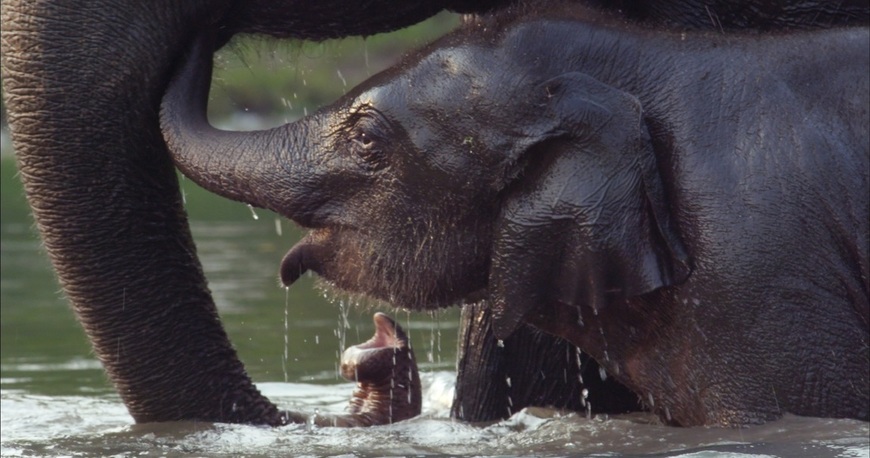
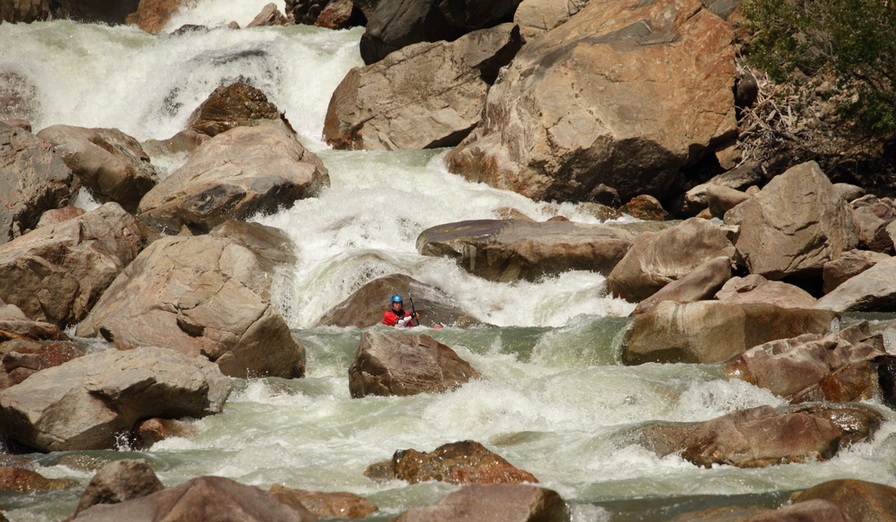
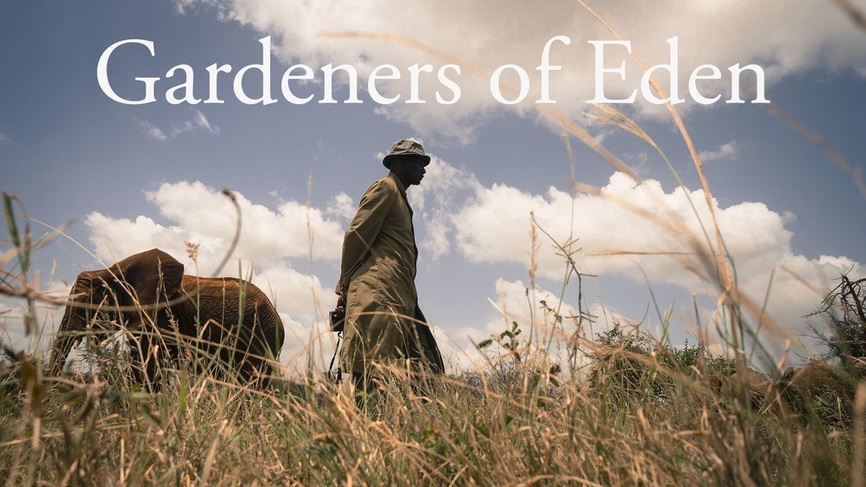
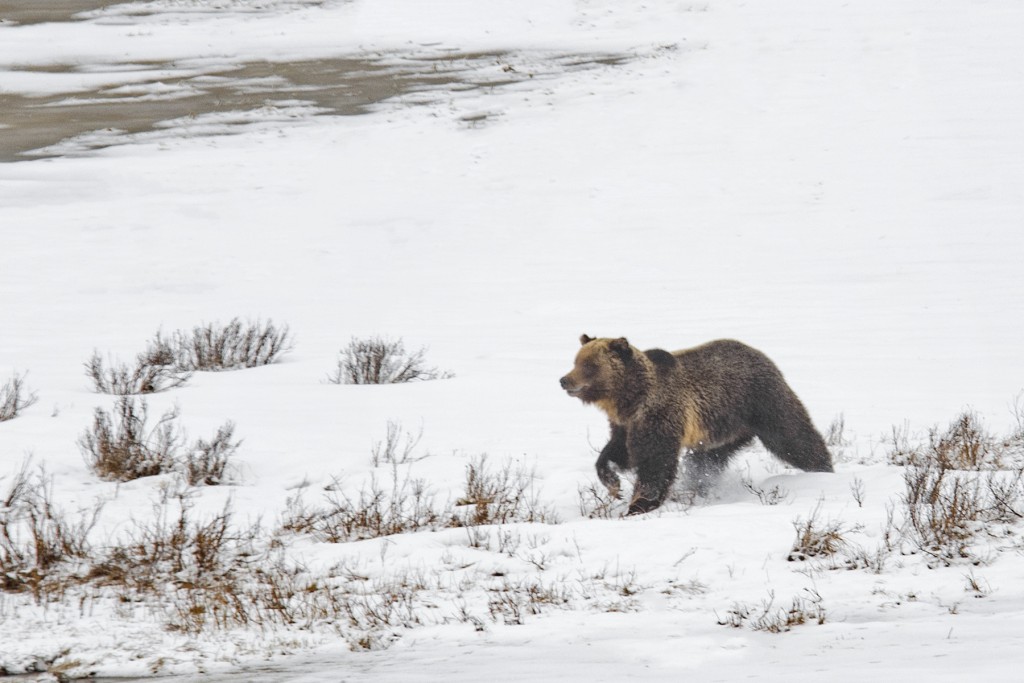
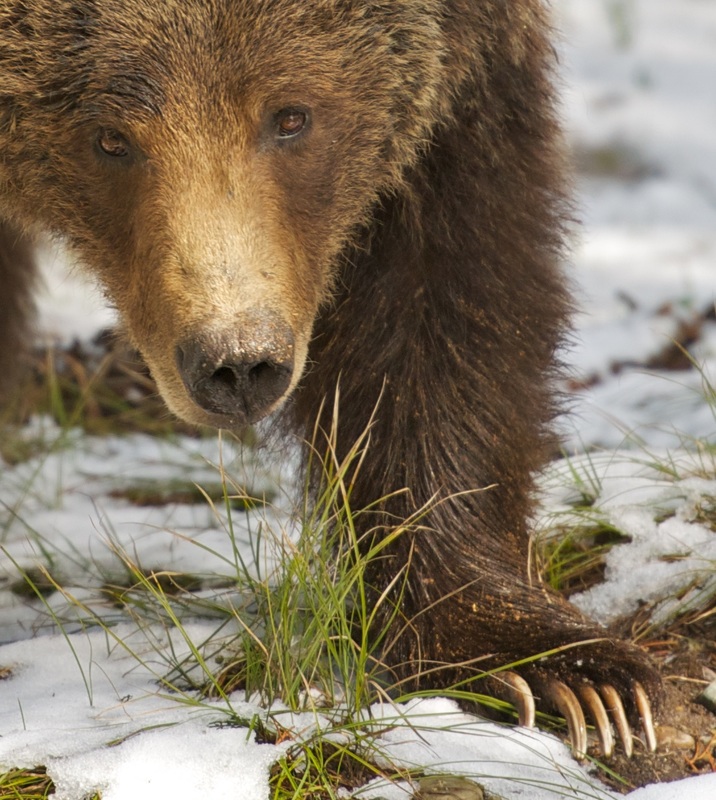
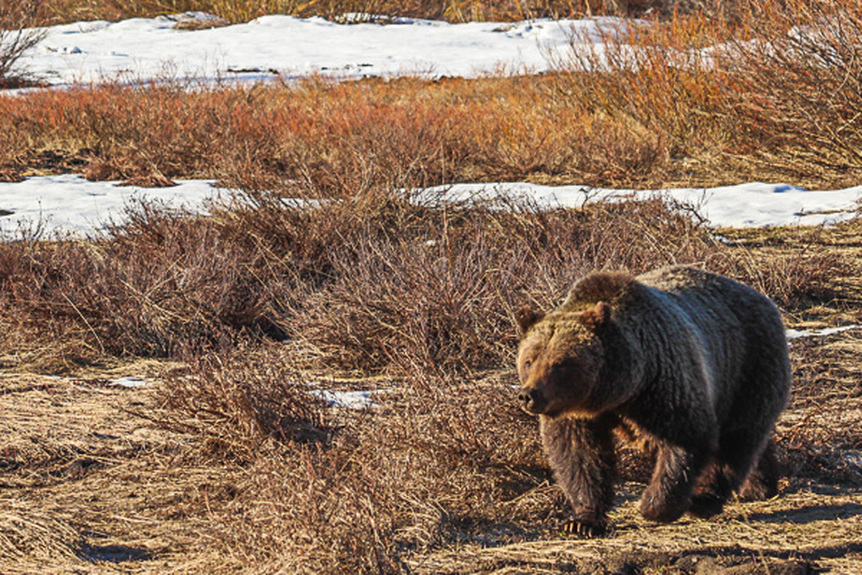
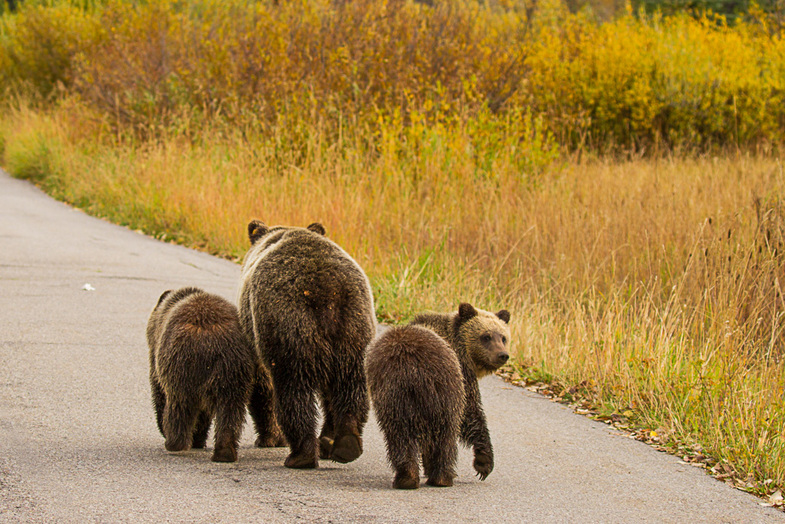
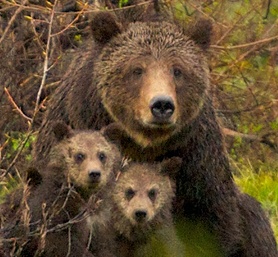
 RSS Feed
RSS Feed